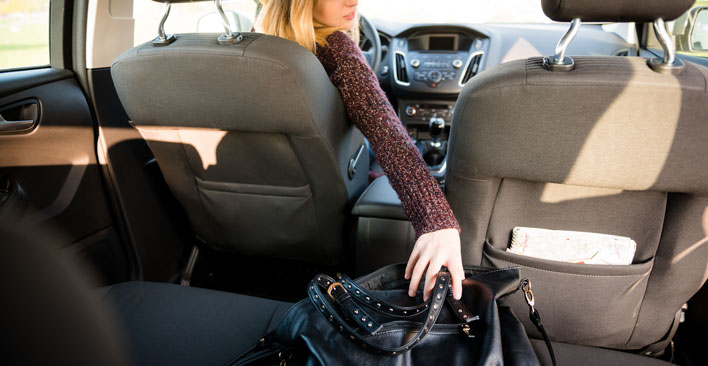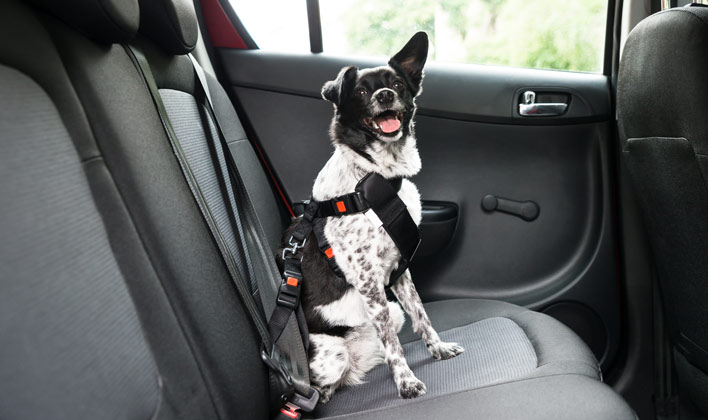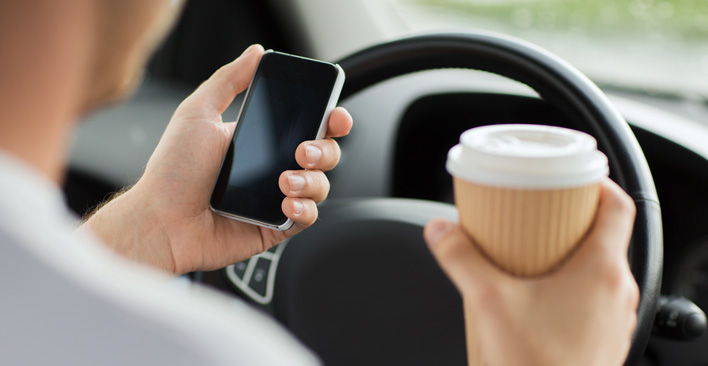Distracted driving accidents are a grave issue, causing injury and death on U.S. roads daily. The National Highway Traffic Safety Administration (NHTSA) tells us that in 2017, 3,166 people were killed in motor vehicle crashes attributed to distracted driving. These accidents accounted for nine percent of fatal crashes that year, and kill an average of more than eight people every day.

Distracted Driving = the New Drunk Driving
Thanks to stricter legislation and public service awareness campaigns, everyone is aware of the dangers of drunk driving. While many states have passed laws banning texting while driving, our society does not yet attach the same level of stigma to distracted driving.
For example, most of us have no problem refusing to get in a car driven by a drunk driver, or telling a person under the influence to not drive. Have you ever done the same with a person who is texting or not paying attention while driving?
If so, good job! Keep it up.
If not, you should start.
And if you’re the person who is texting while driving, you should stop. Now.
Types of Distracted Driving
Texting while driving is deadly. But it is not the only driving distraction. Details on fatal crashes from police reports are entered in the NHTSA’s Fatality Analysis Reporting System (FARS). According to an analysis of this data, the driving distractions listed to have caused the most car accidents are:
- Daydreaming
- Talking, listening, dialing, or text messaging on phone
- Rubbernecking
- Talking to/looking at passengers
- Reaching for device or object in the car
- Eating or drinking
- Adjusting auto components
- Smoking
- Pets or moving objects in vehicle
As we’ve noted in this blog post, some states and jurisdictions are passing laws against driving with unsecured animals in the car. Even in areas that don’t have such laws, driving with a pet in your lap can still result in a ticket for distracted driving. If you enjoy taking your pet along for the ride, consider your furry friend’s safety. Invest in a safety harness or carrying case that can be secured in the back seat. Your pet will be perfectly happy there, and you’ll both be safer.

What the Data Says (and Doesn’t Say)
Independent research by the National Safety Council (NSC) suggests that cell phone use as a factor in car accidents may, in fact, be under-reported. The police officers who enter the data must rely on the drivers’ own statements, or those of witnesses regarding cell phone use. Drivers may not admit that they were using a cell phone or electronic device, and witnesses may not have noticed. Additionally, reporting methods vary between states and law enforcement organizations. Cell phone use while driving may be an even bigger problem than we know.
However, it is interesting to note that data shows daydreaming to be the number one cause of distracted driving accidents. This could indicate that either mental distractions alone are just as dangerous as any other type.
It could also indicate that people are more willing to admit to being lost in thought than they are to cell phone use or other dangerous behavior while driving.
However, the danger of cognitive distraction has been borne out by other NSC research showing that using hands-free cell phone devices when driving offer no safety benefit over hand-held phones. While they significantly reduce visual and manual distractions, they do not reduce the cognitive distraction.
The Multitasking Myth
Modern Americans take pride in multitasking. Unfortunately, science shows us that multitasking is a myth.
Human brains perform tasks in a sequence, one task at a time. Our brains are not able to perform multiple tasks simultaneously. Because our brains can switch between tasks so quickly, it seems like we are doing two or more things at once. We’re not.
In fact, when we force our minds to shift focus constantly and rapidly for an extended time, such as our daily commute, we drain our brain’s resources. Our brains compensate by narrowing our field of vision and storing less information in our short-term memory. In fact, it is estimated that when we multitask, we only process 50% of the information we take in.
The multitasking myth is a direct cause of injury and death on the road. Don’t be a victim of the multitasking myth.

End Distracted Driving – Safe Driving Tips
Ending distracted driving starts with you. There are a few things you can do to make our roads safer from distracted drivers.
- Never text and drive.
- Avoid talking on the phone while driving, even hands-free.
- Avoid other distractions, like having unrestrained pets in your car, or letting your attention wander. Remain focused on the road and the important task of driving safely.
Speak out if a driver in your car is distracted. - Encourage friends and family to put down their phones and other distractions when driving.
Have You Been Injured by a Distracted Driver?
If you have been injured in an accident that was caused by a distracted driver, or a loved one has been killed in a distracted driving crash, contact TorkLaw. Our award-winning attorneys can help.
Our firm is experienced at handling all cases involving distracted driving accidents. We can help you receive the compensation you need to help recover from the incident. And together, we can send a strong message that distracted drivers must be held accountable for their careless and dangerous behavior.
For a free, no-obligation consultation, complete the form on this page, or call us at 888.845.9696.